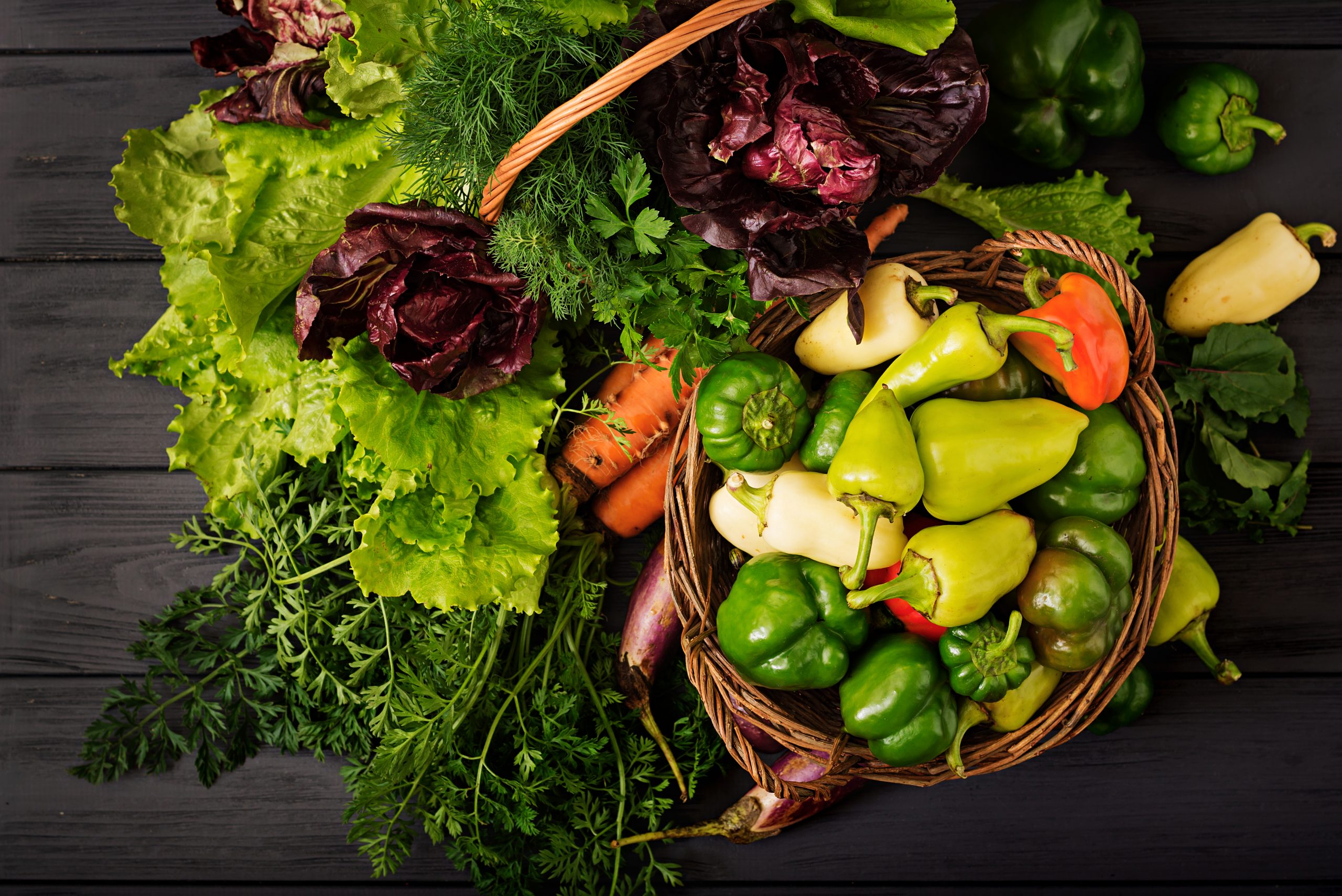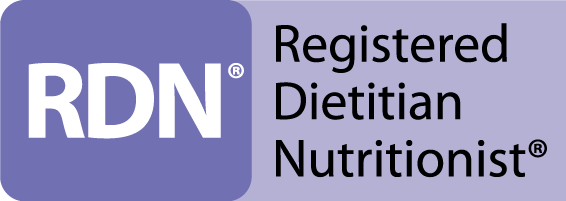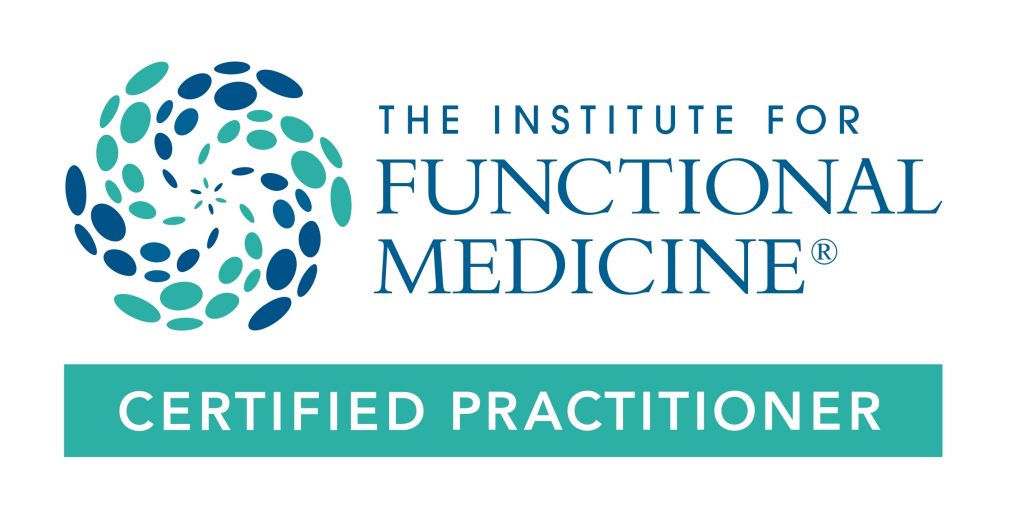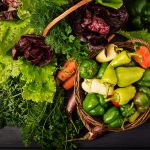CDC National Center for Health Statistics (NCHS) provides data briefs that are statistical publications available to the public regarding the information relating to public health concerns. In 2018 report publication, was noted that between 2013–2016, almost one-half of U.S. adults tried to lose weight within the last year. (1) Just to reiterate, that would be around 150 million people has attempted to address their weight status via weight loss for a period of 3 years, which would put around 50 million US adults every year. Rather significant numbers, won’t you think, given the fact that per 2018 NHANES Survey an estimated 42.5 % of the US population aged 20 and over have obesity. (2) Most commonly reported ways used for weight loss were exercising (62.9%); eating less food (62.9%); eating more fruits, vegetables, and salads (50.4%); drinking a lot of water (44.7%), and eating less junk food or fast food (42.4%). All mentioned weight loss strategies are applicable and acceptable in everyday life as long as they are implemented long term and become habitual practices as part of one`s lifestyle to assure avoidance of Yo-Yo dieting and regaining the weight lost back.
However, in addition, what if we start changing our mindset in relation to food and weight, that not every calorie is the same, colour matters, and maybe, just maybe try and start using food as medicine. Understand, start and use the power of real foods and plant variety for their potent nutrient, phytochemical, polyphenolic properties in such a way that will just contribute, even more, to pave the way so to speak, for the outcome we use them strategically for.
In order to tackle this viable and very realistic option in context to obesity, first and foremost we should broaden our horizon and understand obesity as a state of chronic low-grade inflammation. Not just an accumulation of fatty stores around our hips and waist as a result of overeating, sedentary lifestyle and imbalance between the well-known notions of the number of calories in vs calories out. Yes, these are most definitely contributors towards the state of obesity, but however in addition we must understand that it does not stop there. Nutrient excess, weight gain and obesity result in an increase in size and number of fat mass and fat cells (adipocytes)(7). This increase in fat cell size and number eventually leads to death of the adipocyte and inflammatory response that includes production and release of pro-inflammatory cytokines and recruitment of macrophages. A macrophage is a type of a cell that is part of the immune system whose role is to engulf and clean up so to speak foreign and unnecessary materials in our bodies Upon release, these macrophages release more inflammatory cytokines, activate pro-inflammatory pathways and more recruitment and infiltration of additional macrophages into the adipose tissue. This eventually will result in cell and systemic insulin resistance and exacerbation of the inflammatory state. With obesity, there is also an increased fat accumulation within the skeletal muscle as well as the alteration in fatty acid metabolism which is another route that leads to insulin resistance (IR). “IR is a major metabolic feature of obesity and one of the key factors in the aetiology of a number of diseases including type 2 diabetes mellitus (T2DM)”. It is well known that obesity is also a strong risk factor for cancer, and T2DM is linked to the development of cardiovascular diseases, such as hypertension and atherosclerosis. (3)
So, yes, obesity is a more complex state rather than an excess of 5 or 20 something pounds and having a hard time fitting into my old jeans.
It is understandable and sort of expected, the notion that a better understanding of the molecular basis of obesity, the changes that happen on a cellular level and the way our bodies cope with them, just might lead to establishing better and more targeted strategies for prevention and treatment of obesity. It is in this context where the use of polyphenols might, just might make a difference or at least aid our body into reaching its own homeostatic balance.
“Polyphenols are a class of natural bioactive phytochemical, present in a variety of fruits and vegetables that exhibit potent effects on biological activities for human health” (3). There are 8000 known different polyphenols (10). In regards to obesity they may play beneficial effects on fatty adipose tissue by influencing a variety of processes and metabolic pathways such as:
Alleviate intracellular oxidative stress-> which, when in excess results in a decrease of energy expenditure (meaning energy used) in the fat cell and an increase in energy storage in the adipose tissue. It is within this concept, this part of the pathway, where antioxidants role kicks in by protecting cells from oxidative stress by trapping free radicals and aiding in the restoration of the cell functions.
Reduce chronic low-grade inflammation
Inhibit the production of new fat cells (adipogenesis and lipogenesis)
Suppress the differentiation of preadipocytes to mature adipocytes.(3)
Some of the plant dietary polyphenols that have been examined in relation to obesity and weight loss include quercetin, curcumin, EGCG and resveratrol. (4)
QUERCETIN:
Food Sources: onions, broccoli, kale, green beans, broccoli, alfalfa sprouts, apples, apricots, berries, nuts, seeds, tea, wine, cocoa. (5)
Proposed Model of Action via study reviews:
In the journal of Oxidative Medicine and Cellular Longevity, a 2017 review reports a variety of positive and no effect outcomes in overweight/obese subjects with a daily intake of quercetin: (4)
- In a randomized, double-blind- placebo-controlled 12 week study; Lee et al demonstrated a decrease in BMI, total body fat especially around the percentage of fat around the arm in overweight/obese subjects.
- Another study evaluating the effects of quercetin on obesity in overweight-obese subjects with various apolipoprotein E (APOE) genotypes which are responsible for the ability to properly metabolize fats, reported a decrease in waist circumference and triglycerides showing plausible mechanisms for the quercitin hypolipidemic effects.
- 12-week of onion extract (quercetin-rich extract) intake decreased bodyweight, percentage of body fat, and BMI of 10 female university students.
- Another, 12 weeks randomized double-blind, placebo-controlled study looked at the effects of quercetin- rich onion peel extract on the inflammatory mediators in overweight and obese women. The fat mass measured by BIA and measurement of inflammatory mediators such as IL 4; TNF – Alpha before and after the intervention time showed no significant difference between the intervention and the placebo groups.
- Regarding it`s presumed anti-oxidative capacity, Shanely et al. report that quercetin has no effect on oxidative stress and antioxidant capacity during a 12-week consuming period of high doses of quercetin in obese subjects.
- In human studies of people with metabolic syndrome was found that it can aid in lowering blood pressure without significant alteration of lipids, and also induce expression of brown adipocyte-specific genes. The function of the brown adipose fat is to directly transfer energy from nutrients to heat, and hence more effective use of calorie expenditure vs calorie storage (5).
RESVERATROL – RE
Food Sources: found in over 70 plant species, highly concentrated in the skin of red grapes, tea, berries, pomegranates, nuts (peanuts & almonds), blueberries, and dark chocolate. (10)
Proposed Mode of action via study reviews:
Among the therapeutic benefits attributed to Resveratrol- RE such as anti-inflammatory and antioxidant properties, RE exhibits potential anti-obesity effects by:
- Inhibiting differentiation and decreasing multiplication of adipocytes and increasing lipid mobilization in adipose tissue(8)
- Decreasing the production of new fat cells (lipogenesis)
- Promoting the breakdown of fats( lipolysis) and β-oxidation. (10)
It is proposed that by activating AMPK pathway resveratrol exerts its lipid-lowering effects. AMPK is a master metabolic regulator which signals the body to start getting more energy from different sources. It does so by increasing glucose uptake, inhibiting the storage of glycogen and hence aiding to the improvement of insulin sensitivity. It is in this manner that some of the diabetic medications work for people dealing with type 2 diabetes, such as metformin. (11) In the liver, AMPK decreases fatty acid and cholesterol synthesis, in muscle increases use of fat as fuel and reduces the synthesis of protein, which might affect adversely on muscle growth and a possible increase in appetite, which can be prevented/addressed with the use of branch chain amino acids(BCAA).
- In a 4 week randomized controlled trial in the Netherlands, 11 healthy obese men supplemented with RE and placebo. The objective was to gain more insight into the effects of RE on adipose tissue and underlying process. At the end of the study, subcutaneous biopsy study on the adipose tissue showed a decrease in the size of the fat cells.
- RE is used combined with other phytochemicals, too. For example, 12 weeks of combined epigallocatechin-3-gallate(EGCG) and RE supplementation increased mitochondrial capacity and stimulated fat oxidation in obese humans, meaning improved mitochondrial health and body`s ability to use fat as fuel in obese humans. (9)
- However, a 2013 randomized placebo-controlled clinical trial by Poulsen et al, does not seem to support the anti-obesity potential of RE, as it showed no significant effect on blood pressure, resting energy expenditure, oxidation rates of lipids, fat content or inflammatory and metabolic markers. ( 12)
Epigallocatechin-3-gallate (EGCG) and Green Tea Extract (GTE)
Food Sources: Green Tea, Matcha Tea, berries, grapes, red wine, chocolate and apples.
Is the primary bioactive polyphenolic catechin found in green tea (6). In human studies, it has been linked to improved haemoglobin A1c and lipid levels, and in rodent studies demonstrates indeed weight loss and improvement in glucose levels and insulin resistance (IR). (3)
Exhibits anti-obesity effects by:
- Increasing energy expenditure – meaning energy lost, energy used
- Promoting oxidation of fat- meaning the metabolic ability of the body to use fat as energy
- Other potential mechanisms include modifications in appetite, up-regulation of enzymes involved in hepatic fat oxidation, and decreased nutrient absorption.(6)
Proposed Mode of action via study reviews:
- In a randomized, controlled prospective trial examining the effects of green tea beverage or green tea extracts( GTE), on body weight, glucose and lipid profiles as well as biomarkers of oxidative stress, 35 subjects with obesity and metabolic syndrome were randomly assigned to either control, green tea beverage or green tea extract group.(6) At the end of the 8 week trial, results showed decrease in body weight and BMI, as well as decrease in biomarkers of oxidative stress, LDL cholesterol, and lower ratio of LDL /HDL of the green tea beverage and green tea extract groups when compared to the controls.
- In a prospective, randomized, double blind study, 46 obese patients were part of placebo or daily green tea extract (GTE) supplementation group. After 3 months, results showed decrease in BMI, waist circumference, and improvement in lipid profile as well as increase in total antioxidant levels in serum. (13)
- In another study, 12 weeks of treatment with high-dose GTE resulted in significant weight loss, reduced waist circumference, and a consistent decrease in total cholesterol and LDL plasma levels without any side effects or adverse effects in women with obesity. The anti-obesity mechanism of high-dose green tea extract might be associated in part with inhibition of ghrelin secretion which in turn leads to increased adiponectin levels (10)
CURCUMIN
Is derived from and is the most bioactive polyphenol in the spice turmeric. It exerts several biological functions, including antioxidation, anti-inflammation and substantial evidence in stimulating 1 β-oxidation, inhibiting fatty acid synthesis, and decreasing fat storage. (10)
Proposed Model of Action via study reviews:
A 2020 narrative review published in the International Journal of Molecular Science, contains summarized recent studies that document the potential role of both single polyphenol and some polyphenolic extracts in the modulation of obesity, focusing on human data. (10)
Human trials on obese subjects using curcumin are limited.
- The first clinical trial using curcumin in the treatment of obesity was done in 2013. Mohamed et al. demonstrated a decrease in serum triglycerides levels, and no changes in weight, BMI, or body fat indicating an improvement in insulin actions.
- In 2014, Ganjali and Sahebkar showed that 30-day treatment with curcumin reduced serum levels of inflammatory cytokines IL-4 and IL 1Beta indicating the anti-inflammatory activity of curcumin in anti-obesity therapy.
- Multiple randomized controlled studies have shown a decrease in the waist and hip line, decrease in BMI, and a decrease in oxidative stress burden in obese individuals.
- In 2019 Campbell et al in a double-blind randomized controlled trial examining the effects of enhanced bioavailable curcumin on obesity-associated cardiovascular disease risk, after 12 weeks of intervention results showed improvements in homocysteine levels vs placebo group, and an increase in high-density lipoprotein levels- HDL. No improvements were observed on other biomarkers measured such as an endothelial function or blood pressure. (11)
Upon review of the clinical studies mentioned above, one must note the inconclusive and inconsistent study results. One possible rationale for this would include a multitude of factors that might have contributed to these inconsistencies, which can be classified into two groups: study design and bioavailability.
- Relating to study design, one must be aware of the variety of study designs, lengths of studies, a variation of subjects used such as age, gender, ethnicities, different clinical backgrounds of the study subjects as well as the variability of doses used.
- Bioavailability refers to the fraction of the ingested nutrient that reaches the systemic circulation and specific target sites where it exerts its biological activity. (10) With this in mind, one should note that these healthy and beneficial effects of polyphenols depend not only on ingesting them but rather on the ability of our body to use them via absorption, distribution, metabolism to target tissues and systemic circulation as well as their proper elimination. So for example, only a small fraction of catechins present in the GI tract can be absorbed; Resveratrol has high absorption characteristics and low bioavailability depending on the gut microbiota, circadian variation, particle size etc; Curcumin is being known for its low bioavailability properties and quercetin’s bioavailability is known to have inter-individual differences and it is predicted that dietary history, genetic polymorphisms, and variations in gut microbiota metabolism would play significant roles. “It is, therefore, necessary to find a biomarker that accurately reflects the concentration of polyphenols after their absorption and metabolism.” (10)
Even though science is inconclusive at this time due to possible reasons discussed above, and more research is needed to confirm and investigate these bioactive effects, at this time, including more polyphenol-rich foods such as onions, broccoli, kale, green beans, alfalfa sprouts, apples, apricots, berries, nuts, seeds, tea etc, into our daily lives as part of our diet, chances are they would influence our wellbeing in a more preventative manner rather than treatment, or maybe even both, rather than hurt it. I see absolutely no adverse and detrimental effects on incorporating a cup of tea in our daily hydration practices or eating a handfull of nuts, seeds and berries in our daily routine. It is an inexpensive intervention, that incorporates real foods that actually might benefit us more than we asked, hoped and paid for.
In conclusion, even though more research is needed, eating foods high in quercetin or resveratrol to address abnormal lipid levels associated with obesity in this case, or EGCG to optimize our ability to use fat as fuel or curcumin for that matter for its anti-inflammatory properties to deal with obesity being a chronic low-grade inflammatory state it might not be such a risky, or an expensive thing to do. Using these nutrient-dense, polyphenol-rich foods as medicine might help us decrease our risk to obesity-related chronic diseases on the long run, all the while becoming a new healthy habit in our daily routines which one cannot put a price tag on.
Bid you good health,
Biljana Sofronijoska Rece RDN, LD, IFMCP
This information is intended for informational purposes only. It is not supposed to be interpreted as specific medical advice. Regarding therapies, diagnosis and or health conditions please consult with your qualified healthcare provider.
References:
1.Choi, A M, and J Alam. “Heme oxygenase-1: function, regulation, and implication of a novel stress-inducible protein in oxidant-induced lung injury.” American journal of respiratory cell and molecular biology vol. 15,1 (1996): 9-19. doi:10.1165/ajrcmb.15.1.8679227
2.Martin CB, Herrick KA, Sarafrazi N, Ogden CL. Attempts to lose weight among adults in the United States, 2013–2016. NCHS Data Brief, no 313. Hyattsville, MD: National Center for Health Statistics. 2018
3.Cherniack, E Paul. “Polyphenols: planting the seeds of treatment for the metabolic syndrome.” Nutrition (Burbank, Los Angeles County, Calif.) vol. 27,6 (2011): 617-23. doi:10.1016/j.nut.2010.10.013
4.Zhao, Yueshui et al. “The Beneficial Effects of Quercetin, Curcumin, and Resveratrol in Obesity.” Oxidative medicine and cellular longevity vol. 2017 (2017): 1459497. doi:10.1155/2017/145949
5.Arora, Itika et al. “The Epigenetic Link between Polyphenols, Aging and Age-Related Diseases.” Genes vol. 11,9 1094. 18 Sep. 2020, doi:10.3390/genes11091094
6.Basu, Arpita et al. “Green tea supplementation affect body weight, lipids, and lipid peroxidation in obese subjects with metabolic syndrome.” Journal of the American College of Nutrition vol. 29,1 (2010): 31-40. doi:10.1080/07315724.2010.10719814
7.Schenk, Simon et al. “Insulin sensitivity: modulation by nutrients and inflammation.” The Journal of clinical investigation vol. 118,9 (2008): 2992-3002. doi:10.1172/JCI34260
8.Springer, Margherita, and Sofia Moco. “Resveratrol and Its Human Metabolites-Effects on Metabolic Health and Obesity.” Nutrients vol. 11,1 143. 11 Jan. 2019, doi:10.3390/nu11010143
9.Konings, E et al. “The effects of 30 days resveratrol supplementation on adipose tissue morphology and gene expression patterns in obese men.” International journal of obesity (2005) vol. 38,3 (2014): 470-3. doi:10.1038/ijo.2013.155
10.Boccellino, Mariarosaria, and Stefania D’Angelo. “Anti-Obesity Effects of Polyphenol Intake: Current Status and Future Possibilities.” International journal of molecular sciences vol. 21,16 5642. 6 Aug. 2020, doi:10.3390/ijms21165642
11.Campbell, Marilyn S et al. “Influence of enhanced bioavailable curcumin on obesity-associated cardiovascular disease risk factors and arterial function: A double-blinded, randomized, controlled trial.” Nutrition (Burbank, Los Angeles County, Calif.) vol. 62 (2019): 135-139. doi:10.1016/j.nut.2019.01.002
12.Poulsen, Morten M et al. “High-dose resveratrol supplementation in obese men: an investigator-initiated, randomized, placebo-controlled clinical trial of substrate metabolism, insulin sensitivity, and body composition.” Diabetes vol. 62,4 (2013): 1186-95. doi:10.2337/db12-0975
13.Suliburska, Joanna et al. “Effects of green tea supplementation on elements, total antioxidants, lipids, and glucose values in the serum of obese patients.” Biological trace element research vol. 149,3 (2012): 315-22. doi:10.1007/s12011-012-9448-z








